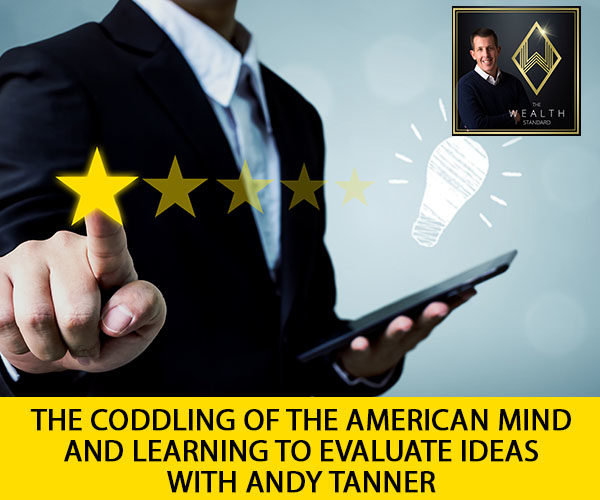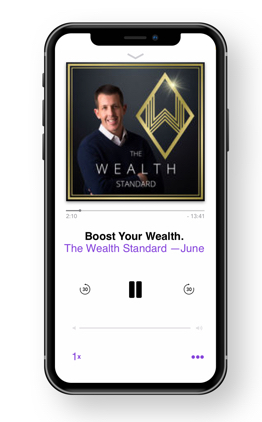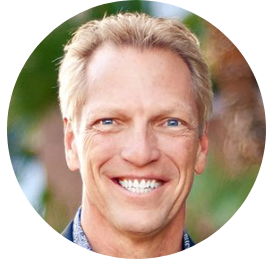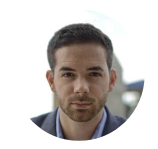The Coddling Of The American Mind And Learning To Evaluate Ideas with Andy Tanner
Podcast: Play in new window | Download
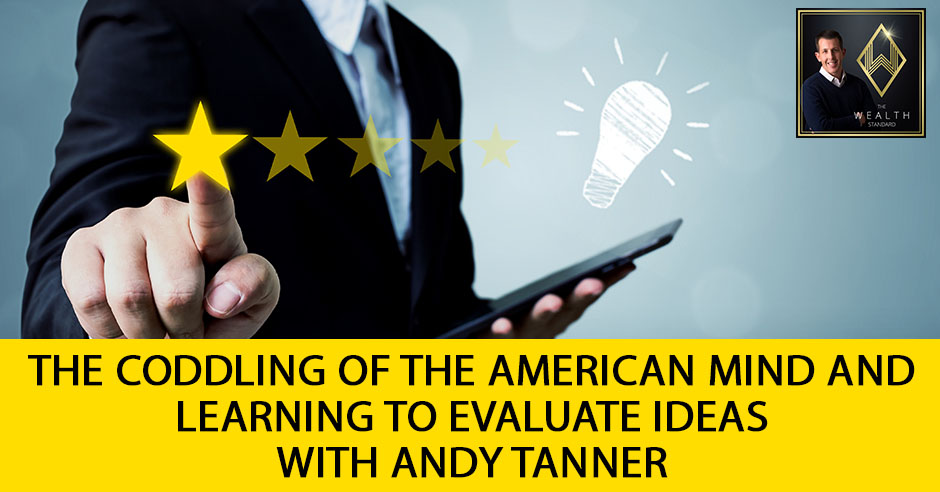
Together with Andy Tanner, we read deeper into Greg Lukianoff and Jonathan Haidt’s book, The Coddling of the American Mind: How Good Intentions and Bad Ideas Are Setting Up a Generation for Failure. Andy is a renowned paper assets expert and successful business owner and investor who also serves as a coach over at Rich Dad’s Stock Success System. He pours out his thoughts and insights over what he thinks about the good, tackling how we draw the line when thinking until when protection and safety are always good and whether or not pain is bad. Andy gives a lot of important points to think about, emphasizing the ability to learn how to evaluate ideas.
—
Watch the episode here:
Listen to the podcast here:
The Coddling Of The American Mind And Learning To Evaluate Ideas with Andy Tanner
I’m here with Andy Tanner. We are going to be discussing as a follow up to Greg Lukianoff‘s podcast called The Coddling of the American Mind: How Good Intentions and Bad Ideas Are Setting up a Generation for Failure. It was interesting as you had posted something on social media and put the idea there which is what coddling is and what it isn’t. I happen to be interviewing the author.
I’ll get a book recommendation from Patrick because he’s always reading fascinating stuff. This one, we both were reading independently in kindred minds.
Thanks, everyone, for reading. How did you hear about the book?
The Rich Dad advisors, we do a book every six months and this one wasn’t in it. Robert had come across it and said, “Here’s another one.” We didn’t study it formally. He has a lot of books. He’s an insatiable student. He reads as much as anyone I know. He’s always got a book to recommend. I picked it up and started with the audiobook while I was on the treadmill. I found it fascinating because of the roles we have in our life as entrepreneurs, investors, coaches and parents. The one that hit me probably the hardest was the parents. When I thought about it, sometimes when you read stuff and you feel a good vibe on it, I always say, “Am I feeling a good vibe because of confirmation bias?”
In other words, “Do I believe this stuff and this guy singing my song? Am I reading it because it’s articulating a belief I already have well or do I like this because some books challenge what you believe?” Those are the best ones. The ones that say, “I’m believing differently now than I did before.” I think that’s true learning. This one is probably the former because it resonated a lot of what I believe politically already and the way I operate. Let’s put it on a spectrum. On one end of the spectrum, you have coddling, which would cause brittle bones with no resistance. The other end you have abuse, which is breaking bones. As a basketball coach, I have parents that see me on both of those spectrums. Some of them say I’m too soft, some of them say I’m too hard. Some of them like Goldilocks think I’m right. That’s very few.
All based on what you’re doing at the time. You have multiple perspectives analyzing how you’re coaching and how you’re leading. Some describe it as more toward coddling, others describe it as abuse.
In the book, it speaks a lot to academia. The idea that in academia, we’re dealing with words and ideas most of the time. Outside of academia, in the real world is where you get hit in the face. The idea is how weak our children. You can’t lump them all together into one. How do you do that? As an investor, do you want to be strong entrepreneurs? Is it easy for us? Is the world of competing and being an entrepreneur just a piece of cake where you don’t need any resistance to prepare you?
That’s the variable is the degree of what is resistance? What is the environment of learning? It says good intentions, what’s the intention? The intention is to protect. Is that a good thing? It is, but it’s in certain contexts. There has to be a certain situation, which protection is good. Is protection good always? That’s where it comes down to, where is that line? What is that environment where it is trauma? It’s disruptive or against a specific belief and how do you govern them?
Let’s talk about investing first. I don’t know how it is in other things. In the stock market and the options market, I don’t know anyone that has incurred losses. I don’t know anyone who hasn’t dealt with nervousness, fear, uncertainty and setback. You’re dealing with emotions of fear and greed and all those types of things and seeking reward one would risk. I will tell you my opinion is in that arena, you better have a strong spirit. You better have some guts and have some stick-to-itiveness. If losing money hurts, is that abusive? Losing money isn’t physical. No one has ever died because of bankruptcy. In this idea to protect the perfect little psyche, what resistance is required?
You look at sports too.
It’s a perfect analogy.
If you coddled an athlete, how long are they going to be an athlete?
They’re not going to be an athlete at all.
As far as growth is concerned, it’s an interesting dynamic because we’re trying to avoid pain but yet pain is the way. Ryan Holiday said, “Obstacle is the way.” When there’s resistance, it could be painful but that’s a catalyst to growth. Is that absolutely true?
Let’s decide this. Let’s talk about pain. Is pain good or bad? That’s the first thing. We tend to want to not have any of it. No pain, no gain. How much pain is healthy? I think it has to do with damage. Your analogy of an athlete is great. It’s as if I resist, if I do the pushups enough, I’m sore the next day. The DOMS, Delayed Onset Muscle Soreness, it’s painful. It rips it out but that’s how the growth comes. Through pain comes the gain. It’s very true. You put astronauts into space, the biggest problem is there’s no resistance. You can kill someone with no resistance. It’s as lethal as if you shot him with the gun. Here you have the spectrum of abuse on one side, coddling on the other. One causes brittle bones. Others will break even the strongest ones. That’s what we’re here to figure out and talk about.
Let’s talk about the book, what’s the point of the book? The book is called The Coddling of the American Mind. It’s not saying that coddling is bad. If you coddle your child or if you coddled a baby, it’s saying the coddling of the American mind. What is he saying with that statement?
No one has ever died because of bankruptcy. Click To TweetThe book deals a lot with academia. They’re saying, “Can an idea be harmful and damaging?” Do we need to protect people from ideas? For example, someone’s on one side of an issue, maybe there’s a rape victim and is going to speak. This rape victim might say, “I’m going to talk about being strong and saying, ‘You need to move on with your life and you need to understand that guy doesn’t have the power to take away your worth, take away your value. It was an episode. Get the help that you need, but don’t let that kid take control of your life.’”
There’s a big group of people who say, “If you give that message, that’s insensitive to the other rape victims.” It’s a very real conversation to have and say, “We’re going to boycott this speech because by being on campus, that validates the rapist in some way.” There were some ludicrous examples on one extreme that he gave. It’s a slippery slope into abuse. You don’t want to tolerate abuse. When you say the American mind, can words harm someone, sticks and stones may break my bones but names will never hurt me? Is that what it is or words will never hurt me? Being called names, name calling or ideas that are opposing to yours, are they harmful? Obviously his premise is no, they’re not.
Let’s go to the growth of the American mind, whatever it’s called in the title. What’s the growth he’s referring to? The American mind, it’s growing. How does it grow? Is it the same principle of resistance that applies to athletics?
He seems to think so. What doesn’t kill you makes you weaker. If it does it give you resistance, you become weaker. When you get into society, you have to function. In real life, there’s this thing called competition. As entrepreneurs, we see this competition and it hits you. It is a fight. If a person can’t stay in the fight and fight for what they believe, I’m damaged. The other thing is that sinister is it can also be a ploy to kill the dialogue. If you embrace the idea that coddling is a good thing, that’s a very good way to kill the dialogue of your opponent as a weapon. Let’s not let them hear this because it’s too harmful. Now, information has been controlled. That’s how cults happen. Information control forms people’s beliefs. If you control the information, people will only get one set of information and they’re not allowed to address an opposing idea because it could kill them and damage them. When you look at information as something as damaging, how do you ever find the truth if you don’t have it?
Greg is the CEO of FIRE, which is the Foundation for Individual Rights in Education. Where he creates through defending free speech. The free speech idea, which is essentially the openness of people being able to share ideas and information. That’s where it’s like some information and some ideas could be harmful. At the same time, what’s the difference between being harmful and resistance or something in contrast to a person’s beliefs? It comes down to everyone’s going to have a certain belief system of a certain perspective. Obviously having an exchange of ideas could potentially ruin a person’s beliefs. It could have them question certain things. It could have them maybe question to school in this sense. The idea that the school is sharing. It can create trauma. At the same time it’s like, “How is the protection of ideas being shared going to be traumatic?” because you could justify trauma on both sides.
If you look at free speech and we isolate that idea into just words, it’s easy to find the abuse and start there and work backwards. Yelling fire in a crowded theater when it’s a hoax, obviously is not a good thing. If it’s a credible threat on someone’s life, a bomb threat, that’s my freedom of speech. That’s a credible threat. That’s harmful. You start to back that off and you say, “Can words cause pain?” He talks about in the book a lot about Veritas. That in the search for truth though, ideas are going to have to be challenged. You move from threatening people or lying to the idea of honest dialogue that may be right or maybe wrong, but there has to be that fight. In a fight, there’s going to be stress. He sees that as a healthy thing. If someone says, “I’m uncomfortable talking about this, this is causing me stress.” Is it stress or is it damage? Is it permanent?” That’s where he says, “Our intentions are good. Don’t make people uncomfortable.” There are so many issues. There are race issues, religious issues, moral issues, political and all these issues that people are attached to. Yet if you isolate people in academia and decide which ideas are healthy and unhealthy. Sticks and stones may break my bones, ideas should not harm me.
It’s interesting to look at it. I interviewed Ed Griffin as part of this season. He’s big into the idea and the protection of the individual and that the collective is an abstract. That the collective doesn’t think like the individual thinks. Look at the fostering of the mind of a young person. We have our perspectives of the world and it’s a certain way. We have certain strengths. We have certain abilities. We have certain tendencies. Our children even when they’re young, we have a sense of stewardship over them. They’re individuals. They’re going to have a different way of looking at a lot of different things. Oftentimes as parents, you want to protect them. You want to make sure that they don’t get harmed. At the same time, how are they going to discover their individual personality, their perspective, their characteristics, their strengths and their talents? How are they going to discover that without the environment in which they’re challenged?
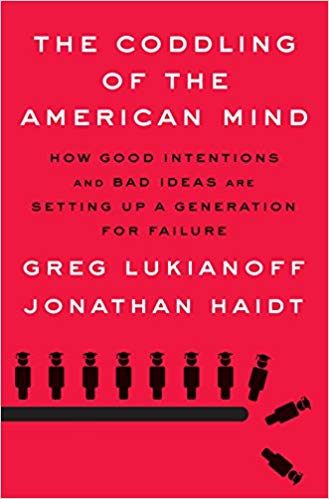
The Coddling of the American Mind: How Good Intentions and Bad Ideas Are Setting Up a Generation for Failure
Tribalism is primal. It takes seconds to happen. Certainly, from a sociological standpoint, we live in tribes as human beings. We have our political tribe. We have our work tribe. We have our religious tribe. All these family tribes. What happens is tribes do have group thinking. Libertarians, Democrats and Republicans all have a statement they make, “This is what we believe.” Any idea that opposes that is an attack on that group. The idea is to protect the people. This idea of coddling is another weapon to say, “It’s not up for discussion. I can’t discuss it because it might hurt our group or it kills the fight.” That’s how culture is a scary thing.
If you look at a Moonie’s Cult or other cults, you look at maybe a Hubbard type of figure, every one of them tries to control information. They say, “This is the information that’s good for you and this is information that’s harmful to you.” You can see there’s a trap in that is that a person will never escape into what could be the truth. Maybe they have the truth. Hopefully, they do but no one has all of it, at least we don’t think so. If you forbid conversation or information, you’ve now created a mechanism that will trap people from the truth. I can’t imagine that’s the way to protect the truth. Most of the times it’s the way to defend something it might not be or hide the truth.
When it comes to our evolution as people, as humanity, you’re either growing or you’re dying. You don’t sit stagnant in life. We’re compelled to move forward. It’s hard to argue. Then you have to define, “What is growth?” It goes to Maslow. What does Maslow’s Hierarchy of Needs show? It shows you first seek food, shelter and clothing. You seek safety. Safety is found in tribes, in groups. What’s next?
The highest part is self-actualization.
You can’t achieve self-actualization unless you have a sense of safety. There are the ego and the self-esteem side of things too. It’s interesting because we’re compelled to seek safety. We’re also compelled to love and also be empathetic, which is the self-actualization in a sense. Everybody is at different stages. That’s why when you look at a tribe, it’s full of individuals at different stages. In a sense, tribes both protect but they could also inhibit. When you look at academia, you look at the purpose of school and education, it’s not to memorize multiplication tables. What’s it supposed to do? It’s an environment in which your mind grows. It’s challenged. You have new information. It grows even more. It’s challenged even more. It grows even more. That’s the thing is I look at academia and these days it’s the subject matter. You don’t need half of it. Academia, for the most part, is teaching kids how to learn, but is it teaching them the right way to learn?
I can tell you not knowledge but like toughness. Another great book is Jay Bilas’ Toughness. He talks about what toughness is and the difference between a rock and a rubber tire. In academia, what’s interesting is young students, eventually are going to have to go out into the real world eventually. If we coddle, can they survive the world? That’s the big thing. Are they strong enough to deal with the realities of setback? One of the things in the book that’s interesting as he talks about the Generation Zs and these guys that were brought up on their phones and social media where the fear of being left out is traumatic.
The fear of not being liked on the Facebook page, the fear of seeing all your friends someplace where you didn’t get there. All this stuff causes all these anxieties that maybe you and I can empathize with. We didn’t get it drawn up. If we go back to pre-Columbus, Native Americans. What was the adversity for those kids? Starving, not being able to get the buffalo and getting beat up by the other tribe. Their idea of stress and difficulty was probably much more physical than social-emotional. We have almost no physical. You’re going to have the bullies and stuff but I’ll tell you, by and large, it’s more emotional toughness and emotional battles that these guys have to fight.
I don’t think it’s shutting off the social media. I think it’s learning to deal, to face it, not hide. Facing up, manning up, womaning up, adulting up or whatever you want to call it and not hiding from these little things that get magnified. He talks a lot about that in the book too is that by creating a safe place suggest that it’s horrible. It reminds me when someone went in to get some counseling and they said, “This is going to happen to this guy. I want to talk to someone.” It’s not like, “This is going to harm you. You’re going to have to work through this. This is going to get worse. You get PTSD.” He says, “No, I want to talk to someone. I feel like talking and I think I’ll be okay.” “No, you’re not okay. You’ve been harmed.” It’s crazy.
Where does it come from? Is the intention so that they’re safe and that they’re protected, they’re protected from harm?
Through pain comes the gain. Click To TweetWhere I might disagree with what he said is he says, “Good intentions and bad ideas.” I’m not so sure they’re always good intentions because if you have an ideology, you’re against and you can create and paint it as toxic that gets it out. You don’t have to address it. You don’t have to debate it. You have to prove it wrong. You say, “It’s harmful. It’s out.” You can eliminate something from the public debate and the public dialogue by labeling it as toxic and people will be trapped in the ideology that the person refers. He says good intentions and bad ideas. Is that always good intentions? Are we always calling good intentions or is this a way to keep things out of a public dialogue by labeling it toxic?
Instead of going off on tangents, in the end what did we learn from it? What are some of the things you take away and say, “What is the right thing? What is not the right thing? Where do we draw line?” It’s a very gray area and it’s very situational.
I don’t have the answers to that or I’d write another book. Part of the value of reading a book like that is the mindfulness of it. It is when we’re in a situation like let’s say I’m coaching basketball. It’s like I can say, “On this side it’s coddling and on this side it’s abuse. I might not have the answer but if I think about it, I’ll probably get closer to it than if I don’t. At least I can consider it, “Are we coddling or are we being abusive?” If we don’t even ask the question and we go, “This is abuse every time or this is coddling every time.” At least the idea of having that spectrum to consider probably will make you a better father or maybe make you a better coach. Not a perfect one, but it will probably do a better job. As an investor and entrepreneur, it’s the same thing. I don’t want to be guilty of either one. That’s what I put on my Facebook page. I don’t want to be an abuser but I don’t want to be a coddler.
It is situational. Is it possible to know exactly what to do in every single situation? Probably not. That’s why I would say dictating policy around how you deal with resistance is concerning because you’re allowing one person or a group of people that have interests, that have a bias to take away your power, take away your ability to know how to act for yourself in that specific situation.
We’re probably biased. You and I both feel the power of an individual is very strong. When I’m on my podcasts addressing difficult issues and as an educator, my solutions are to the individual. Off and on my podcast, I have people who want a systemic solution. They go to Congress and they try to lobby for this law and that law. I go the opposite way. I said, “There’s nothing you can do about what Congress says. You as an individual, you can make decisions to better your life and improve yourself.” There’s always going to be that. It’s going to be an interesting experiment. I have a little basketball team that I coach. I’ll share the story. Half the people are going to think it’s awesome. Half the people are going to think I’m an abuser.
We were playing below our potential in a game. We were down by four. We should have been beating this team by 40. We weren’t playing our best. I called a time out. I align the kids up and I said, “This is a one-minute time out. We’re going to run a sprint during the time out and we’re going to get tired one way or the other. We’re going to get tired playing harder or tired sprinting.” They ran the sprint. As soon as they went back, they got back out and played. I called my second time out, I had to do it twice. The other team cell phones are coming, “This is going to be on YouTube. This crazy coach doing this.” What was interesting is after the second time out, that’s a lot of running for two minutes, to run sprints for two minutes. I didn’t care about the game. I thought, “We’re going to lose this game because I’m going to send them out tired.”
You wanted to take advantage of the environment to teach a lesson.
What I did is I looked them in the eye and I said, “I can write effort and tired down on a clipboard. I could put it on a chalkboard. I could try to explain what it feels to be tired. How many of you looked me in the eye and know what it means to give your all now and what it feels like to go to that place? You know what tired feels like. You weren’t tired before when I called a timeout, you had energy left to burn. Now you burned it. You know what it feels like.” That’s what it should have felt like when I called. It was interesting because I had parents mostly from the other team that were booing me and this and that. After I had two or three quietly come up and said, “If you’re ever looking for a player.” They thought it was great. One of those parents, I’m not coaching his kid. What’s going to be the test is this, 30 years from now, are they going to say, “My life is a mess because I had this abusive coach. He embarrassed me in front of everybody,” or are they going to say, “I learned the best lesson when I was thirteen years old?” Running for two minutes is not physically harmful. People do it all the time. You get tired. You recover. No one had a heart attack. No one has had a broken knee. Was that emotionally bolstering to that group or is that emotionally deteriorating to that group? Time will tell. I don’t know.

The Coddling of the American Mind: If you forbid conversation or information, you create a mechanism that will trap people from the truth.
I think also you have the relevance of the person that’s controlling the environment at that time, making those decisions and influencing these decisions. This again comes down, maybe it’s the intention, maybe it’s leadership ability. You could easily have seen a person who could have been a jackass and have the kids sprint and yell at them. The example I always think of is it was like his platoon or some war movie where Nick Nolte was this jackass leader that nobody wanted to follow. You also had true leadership there as well. Why do people follow certain people and not others? I’m not sure if it’s a feeling, and knowing you, the kids felt like you knew what was in their best interest.
Maybe not, who knows? My opinion it was or I wouldn’t have done it.
It is very situational. We’re going to make mistakes. Perfection is an idea. Nothing is perfect. What’s the perfect way to deal with the situation? The perfect way is to accept imperfect but allow people to figure it out. That’s where I look at free speech zones. Maybe somebody comes on campus and gives wrong information.
How do they learn to evaluate the wrong information?
That’s my point is you have to have the experience where there are resistance and the ability for something false and something true to arise and for individuals to have that experience. If you rob that experience, I believe that it is that coddling. It does weaken an individual because they’re going to face resistance at some degree in the future and how are they going to deal with that?
The other thing it does is it eliminates gray because it teaches people to have a worldview of harmful and safe. We can categorize as, “That not safe, it’s out. That it’s safe, it’s in.” It eliminates gray and the ability to have a gray area to say not everything is dichotomist. You don’t want to have people seeing things in terms of who’s right, who’s wrong or even he’s good, he’s bad, harmful or safe. Here’s what’s interesting. He talks about a safe room. This blew my mind, he talked about announcing to students that, “I might do something that could trigger you if you don’t want to be around or go to the safe room and hold this teddy bear.”
Literally, a teddy bear is in the room. By framing that to a young mind, by saying what could happen is dangerous enough to require a bomb shelter. You’re now putting people it’s a nuclear freaking warhead. By sending that message, are we teaching people that words that sticks and stones are not only the things that break bones, but words can also devastate your soul or your spirit? It doesn’t seem intelligent to say, “Here’s information. Don’t read it,” because if that’s a policy, you’re not going to get to that veracity, that truth.
It’s not an absolute finish line. Things are always being discovered. Progress is always being made. What is true now may not be true tomorrow.
When it comes to our evolution as people and as humanity, we are either growing or dying. We don't sit stagnant in life. Click To TweetYour debate skills go out the window because there won’t be one.
That’s the thing is we have a saying that we use all the time because I’ve had experience in business where you had two conflicting ideas. There was so much resistance there. They didn’t want to be wrong and kept resisting. Those people are gone. I look for that now. I want them to pursue what’s right, but not be adamant about what their opinion is being right and being willing to be slightly wrong. That’s the thing. If you look at the dialogue, if you look at progress as an individual, we’re very limited. Having conversations, especially group conversations, where you have similar values and similar outcomes, multiple minds in there is a profound dynamic. However, if you essentially prevent people from being harmed, you’re never going to have that conversation, to begin with. The ideas will not come to fruition.
We’ve talked about it in the position of being the leader of your own investments, of your own company, of your own sports team or your own family as parents. I also thought a lot about this book in terms of whether I’m seeking out safety too often. Whether I coddle on myself by self-imposing restrictions on what I read or what I’m willing to listen to. I think no one gets out of cognitive dissonance. It’s the way we are built. Flipping that in my mind is the challenge of how open am I to have my beliefs changed and not be coddled and how might I be challenged? There are a couple of fun websites out there.
One of them that I thought was fascinating is they’ll take these severe issues like gun control or abortion or stuff and people will go there and say, “Please try to change your mind. I want to see if I can find empathy for the other side to change my mind.” It takes a lot of courage to do that because we become so entrenched. The news cycle is interesting because Walter Cronkite used to summarize everything that was important about 25 minutes and a couple of commercials. I don’t see the difference between Fox and MSNBC because I feel like both of them are telling their crowd what they feel is right.
It’s a validation of their own narrative night after night. It separates people good or bad. The tribalism that you mentioned with this idea that it’s usually one tribe and another tribe. They’re trying to limit this information coddled in their own group. What’s interesting about that is these two groups, they’re going to fight and they’re never going to have the chance to get out of that rut because they’ve lost the talent and ability to consider something else. What happens in tribalism is as soon as you put a label on a group, all of their individual merits are erased. For example, if you don’t like President Obama, he said he’s a Democrat. What type of father is he? He must be a bad one. What type of husband is he? Maybe he had some interns in there with them.
Who knows what type of cigars he smokes? He quit smoking when he was in there. What happens is when we get those divisions, we tend to erase all of the other merits that the individuals in that group might find. As I look at my friends who are Democrats, Republicans or Libertarians, I have friends in all three groups that if I was in trouble and my car broke down the middle of the freeway at 3:00 in the morning, I feel like I’d call them. Every single one of those guys would respond in the most benevolent manner willing to help even though they’re there in those different groups. Another part of this coddling of ideas is they’re bad people. They’re dangerous. You erase any merits they might have outside of that solitary issue. All of a sudden, the dean is unfit for office. All of a sudden, the dean of this college should resign because of this issue.
That’s what Greg and his organization defend with one of the authors of this book. That’s the biggest thing right now because kids going into college, think about the environment that they’re in. They had high influence based on parents, community, the city they grew up in or the state that they grew up in. They have a certain perspective of the world. They go into this environment in which it’s different because you have kids that are all different. In that environment, it’s grounds to make a lot of change because your mind is pliable. You’re highly influenced because it’s new. If you’re given one narrative, you’re given one label, then now you go into the real world, it’s going to be such a shock. It’s going to be beyond whatever crutches. It’s one of those things where it’s destroying an individual’s ability to think for themselves. They’re thinking in groups.
The evolution of the technology is interesting though because we live in an information age where ideas are thrown at you all the time. It makes sense that people that didn’t feel that’s a war because there isn’t information war controlling eyeballs and controlling ideas now that they would want to fight by saying, “This is an incoming missile. We can’t have these missiles pointed at us.” It’s such an interesting time to be alive.

The Coddling of the American Mind: Perfection is an idea that nothing is perfect.
It’s fun at the same time. There’s information overload. It’s what we experience on a daily basis relative to 60, 70 years ago. It’s unbelievable and it continues to change. I would say going back to some of the main points, “All human beings are flawed. All groups have flaws but they all have strengths.” The environment in which people where discussion can take place, where exchange can take place. That’s how you grow. That sounds Utopia-ish but at the same time, it’s one of those things where the freer a person is, the more growth that exists.
If I want to run away from coddling, the further away I run for coddling, the closer I get to the abuse. If I want to run away from abuse, the further away I get from abuse and coddling. The invitation for me in reading this book was to begin to see both of those extremes and try to come back to a larger awareness in each individual person, situation and role that I play. Try to find a healthy place in the middle where there’s enough resistance to grow the bones but not enough resistance to break them.
This is such a great point because the coddling is what shows a sense of nurturing.
Everybody is dangerous.
At the same time, if you have that intention and the idea but yet you allow for resistance. I’m talking more like a parent right now. If you allow for that resistance and difficulty because you understand how growth occurs, that’s like right there in the middle.
We usually start off talking about investing. We always come back to our kids. It’s a big challenge in this environment and yet the competitiveness of it. I see parents that schedule up every bit of their kids. “No Fortnite allowed because you’ve got to get the piano done. You’ve got to get this done. You’ve got to be prepared to get in this college.” They overtrain in order to try and make them strong enough to compete. They’re scared their kids would fail. The other end of the spectrum are these people that just coddle. I’ve seen it in sports where parents are so afraid to have their kids lose a game. It’s insane to lose a game. They’re sandbagging that goes on where teams with huge talent will go and play in leagues with almost no talent so they can get their trophy. It’s incredible to me.
We were talking previously about your boys. You talked about your experience with playing basketball. You played at the University of Utah. You had a team but you didn’t play high school. The reason why is because you said you were cut. It was interesting how they did the cuts, big cuts and then a small and then the one last person cut. You went through that for three, four times.
I got cut seventh eighth, ninth, tenth, eleventh, twelfth and once in college before I made it.
You can't achieve self-actualization unless you have a sense of safety. Click To TweetIt could be described as traumatic. At the same time, what did that create inside of you? How did that start to form who you are and what you’ve pushed for?
I’m not the only person that might have tried out for play and didn’t get the lead. As investors, learning to understand that failure isn’t fatal. Failure is not the end of everything. Did it hurt? Absolutely. Did it affect my self-esteem? Absolutely. At the same time, those were gifts in a way because you learned that you don’t win every race and everything isn’t roses all the time. He talks about in this book that there’s a resilience that is inside of people, evolutionary or God-given, one of the other, to where there is a resilience built in where people can deal with the cancer diagnosis and figure it out.
You can control whether someone comes on campus to speak but you don’t control when you hear the news that you’ve got cancer or when you’re being sued by a competitor and it’s unfair. If you can’t handle a simple idea being brought on campus, what’s going to happen when you’re in a lawsuit or when you get cancer or when your child gets cancer? You can’t coddle your kid against cystic fibrosis. You can’t coddle them. There are certain things in life that can’t be coddled. What makes us think that an idea can hurt these kids when there are so many more things that are so much more emotionally severe, infertility, loss of a child, lawsuits or failures in business?
These coddlers, how devastating was it to try out every single year and get cut? It was devastating. It’s not something that I couldn’t rebuild on top of the rubble. What about a failure in business? What about a failure in investment? You get into bigger stuff. What about health failures? What happens when you lose a child? There is definitely a resilience that can be strengthened or weakened inside of us. It’s finding that point where you bend but not break. Where pain is a good thing, not a harmful thing. Too much lifting can be degenerative and cause your bones to hurt but not enough to be degenerative and cause your bones to hurt. Where do you find it? I don’t know. It’s food for thought. For every investor and parent, where are you? Do you want to be coddled? None of us want to be. I don’t know.
This probably resonates with most people. It’s one of those things where these principles apply to so many different aspects of life. We have talked about kids. We talked about sports, business or politics. It applies to everything.
We should never apologize for this podcast because resistance is going to have a business. Resilience is a prerequisite. The strong survives in a world that competes. You can’t eliminate the competition because it’s the way life goes.
The first four months of the year, we’re talking about capitalism. The reason why I wanted to get this on is because obviously, it’s a different situation but it’s a very similar principle because of the notion of capitalism. It’s one of those things where you have commerce. You have the exchange of ideas and capital. You’re going to have success and you can have failure. Free market capitalism doesn’t exist because you have political influences. You have monetary policy influences. That’s the thing is if you look at where we’re at as a state of the economy, we’ve had artificial coddling of institutions of certain businesses of money in general where people put money to invest in hope for some future. People have been coddled when it comes to commerce due to the coddling of the actual institutions that are serving them. I look at how applicable these ideas are in that instance. This comes down to maybe where we end, which is if you continue to coddle, you have very weak bones. When resistance happens, you have breakage.
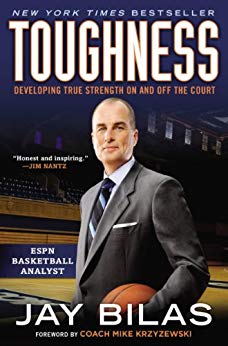
Toughness: Developing True Strength On and Off the Court
What’s interesting is there are both ends of the spectrum in capitalism. There’s abuse because he who has the gold makes the rules. There’s a great way to think about it is when you think about capitalism, if you want to take the other side of the argument, talk about the evils of it if we dare do that. What Superman’s greatest superpower? He’s got an X-ray vision. He’s strong.
He can detect if the person is telling the truth.
I’ll tell you what I think it is. It’s his heart because if you change Superman’s heart, he becomes the world’s greatest villain. He is still the world’s greatest superhero. If you have capitalism and you have evil people begin to grow. You have greed. You have those things. You have no benevolence. There is a range but yet if you coddle, it’s as bad.
They’re very similar if not identical principles.
The thing that’s beautiful about capitalism is it allows for the tremendous potential for someone to be the greatest they could be. You look at a Warren Buffett and Bill Gates, you look at the amount of money, half of their wealth are given away. They both made that pact. They have that club they started where a billionaire can join and say, “We’re going to give half our money away minimum.” They will give far more than that. Certainly, guys like Steve Jobs, when I look at what my kids learned in that iPad, they’ve contributed in their products as well. There is ambivalence. On the other side, the Bernie Madoff’s of the world, they deserve to be in prisons because they have broken rules.
You have rules that protect people’s rights and that’s where you look at the environment though. You’re not going to ever have perfection. You’re always going have a Bernie Madoff.
Here’s what’s tough. Here’s probably a truth that we fight against. It depends on what your definition of because it’s an idea that’s manmade, the idea of fairness. If you go into the Serengeti and you watch any other species, do they have fairness? Do chimpanzees have fairness? The one mother who got their daughter eaten by the lion when they weren’t looking, that’s not fair? The death of your chimp is a fair game out there. We’re not willing to accept that as human beings because we’re smarter. We’re not animals but yet we are animals. It is an interesting idea that the pursuit of fairness is a great pursuit, but defining what it is, that’s tough. Every human being wants to be treated fairly.
Do you teach your child life is fair and you should expect it? Even though we all want it and even though we want to pursue it, it’s so difficult because life isn’t fair in how we’re born. Some people are born with higher IQs, some with low IQs. Some of us have to work harder for what we get than the smart kid. Other people are limited physically. The way you’re born genetically, the genetic lottery isn’t equal. Unless you want to get into eugenics someday, which we probably don’t want to do. How do you make it all fair by the nature of birth? You’re going to have abuse, coddling and unfairness in between. It’s tough.
You have the environment and humanity has amazing things about it. It also has a lot of frailties and weaknesses. That’s most fair environment is where I would say people’s rights are protected if you were able to act, learn and grow. It’s hard to find because there are lots of different circumstances and situations.
Things are always being discovered. Progress is always being made. What is true now may not be true tomorrow. Click To TweetEqual opportunity is very important to fairness and yet we have an inequality in the ability to capitalize. You can throw out an equal opportunity but individuals might not be able to equally capitalize because of what they’re starting with. How do you subsidize? That’s where we start to coddle maybe, I don’t know.
The things that you can do though is essentially have certain environments in which ideas can be expressed. That was the point of the book.
You can’t suppress ideas in the name of protection.
That’s where people start to understand themselves and understand growth and what their strengths and abilities. It has to go through a refining process.
It’s a great question and an invitation for discussion is, “What is harmful and what is the power of resilience? Are we not resilient enough to withstand an idea and a speaker on campus that disagrees with us? Are we not strong enough and resilient that is abusive and breaks our bones?” He says, “Let’s put the pause button on here and understand that we might be taken this too far,” in his opinion, obviously, we have. For that reason, it’s a very healthy discussion because I didn’t realize how pervasive it was. The things he was siding and the sheer volume of cases and losing in their jobs over two words in an email that got blown up and the fear of your colleagues and being tenured. It was incredible. I had no idea what was going on in academia. I didn’t realize there were safe rooms and trigger words. My son in his school might be saying now this might cause you mental harm if you want to go to the safe room, go ahead. That’s unsettling that level of coddling. I probably liked it because I agreed with it. I confess.
My disagreement with academia in general and a lot of different aspects of it. This is the next generation of those who are going to be in the world, be producing things, starting businesses or solving problems. It’s one of those things where in order to solve a problem, you have to be able to face some adversity. If the environment of which they’re transitioning from a home life where they’re highest protected. Kids in generations to the environment which is the in-between before they get into the real world. If that is how the programming is taking place, they’re not going to be fit for most businesses. They’re not going to be fit for most for most jobs because if they cling to this notion of tribalism. This is the idea and everybody has to believe that certain way. They’re afraid of being wrong. They’re afraid of getting hurt, that person that solves problems.
That’s not resilient. It’s an awesome discussion. Thanks for having me.
Thanks for reading. We’ll see you next time.
Important Links:
- Andy Tanner
- Greg Lukianoff – Previous episode
- The Coddling of the American Mind: How Good Intentions and Bad Ideas Are Setting up a Generation for Failure
- Foundation for Individual Rights in Education
- Ed Griffin –Previous episode
- Toughness
- http://AndyTanner.com/
- https://TheCashflowAcademy.com
- https://www.Facebook.com/andytannerrichdadadvisor
- https://Twitter.com/andytannerstock
- https://Instagram.com/andytannertraining/
- https://www.Amazon.com/Andy-Tanner/e/B00J22ZGUQ?ref=sr_ntt_srch_lnk_1&qid=1551893381&sr=8-1
About Andy Tanner
 Andy Tanner is a renowned paper assets expert and successful business owner and investor known for his ability to teach key techniques for stock options investing. In 2008, Andy was key in helping develop and launch Rich Dad’s Stock Success System, which teaches investors advanced technical trading techniques to profit from bull and bear markets. He serves as a coach to Rich Dad’s Stock Success System trainers and as the Rich Dad Advisor for Paper Assets. He is currently authoring an upcoming Rich Dad Advisor book on paper asset investing.
Andy Tanner is a renowned paper assets expert and successful business owner and investor known for his ability to teach key techniques for stock options investing. In 2008, Andy was key in helping develop and launch Rich Dad’s Stock Success System, which teaches investors advanced technical trading techniques to profit from bull and bear markets. He serves as a coach to Rich Dad’s Stock Success System trainers and as the Rich Dad Advisor for Paper Assets. He is currently authoring an upcoming Rich Dad Advisor book on paper asset investing.

